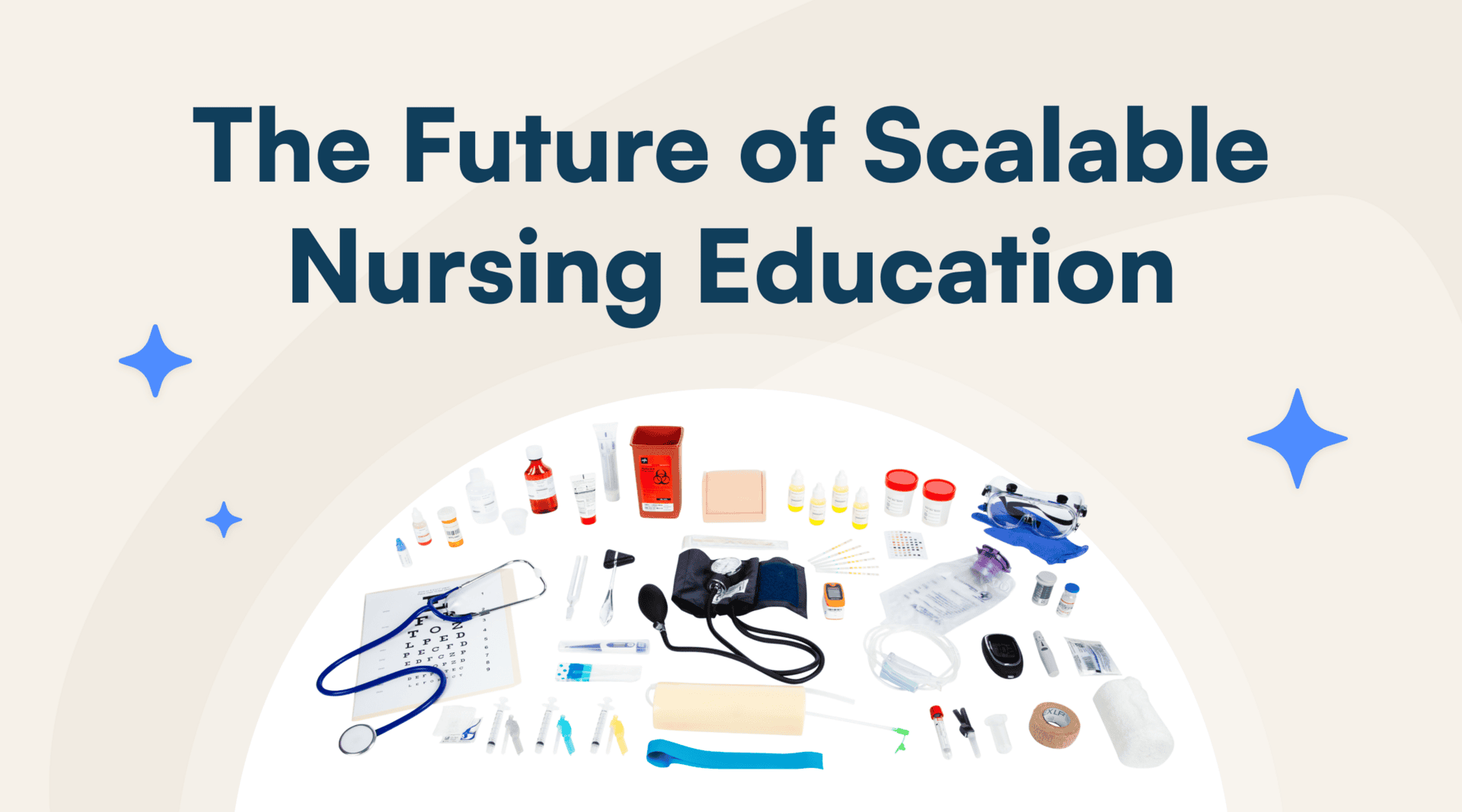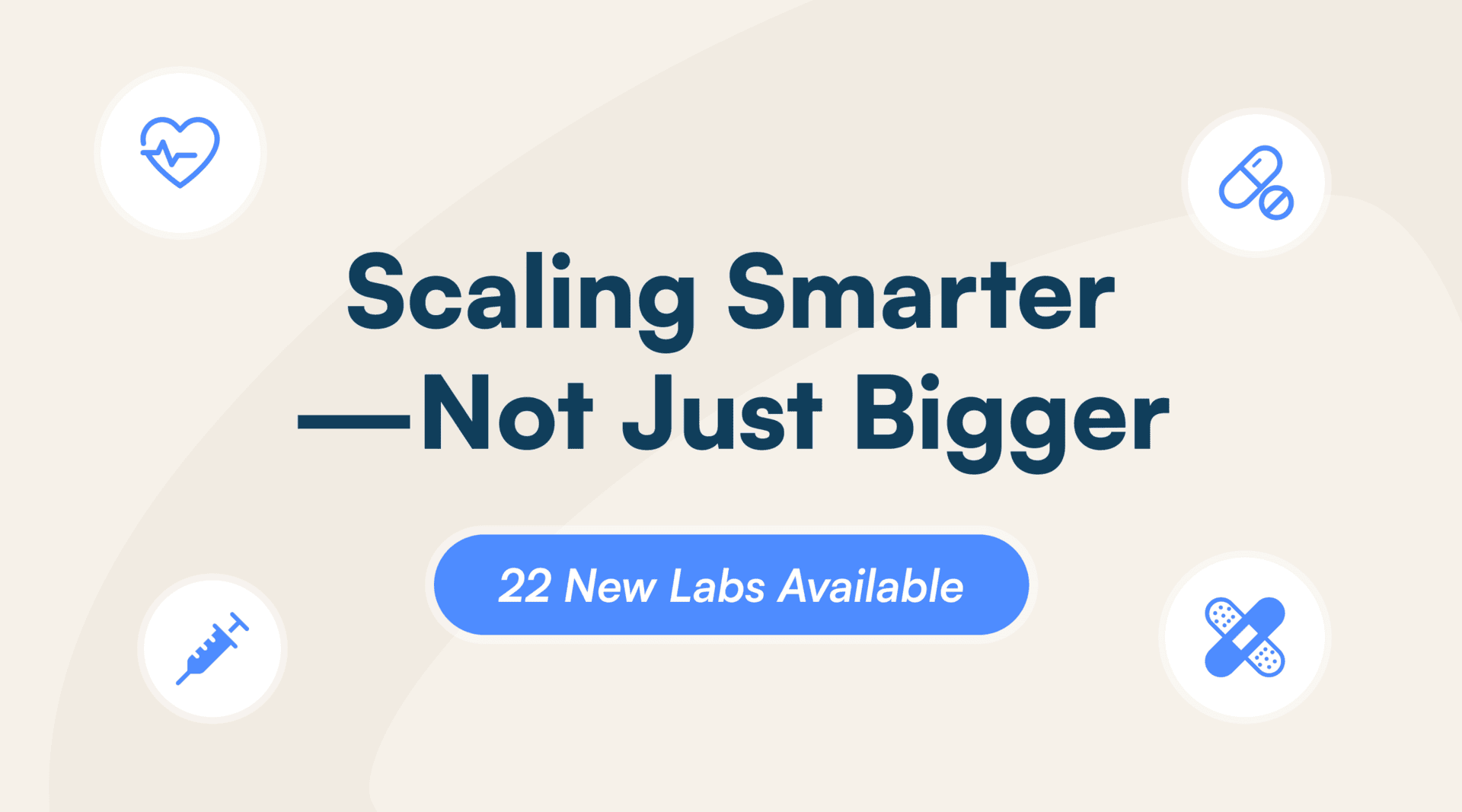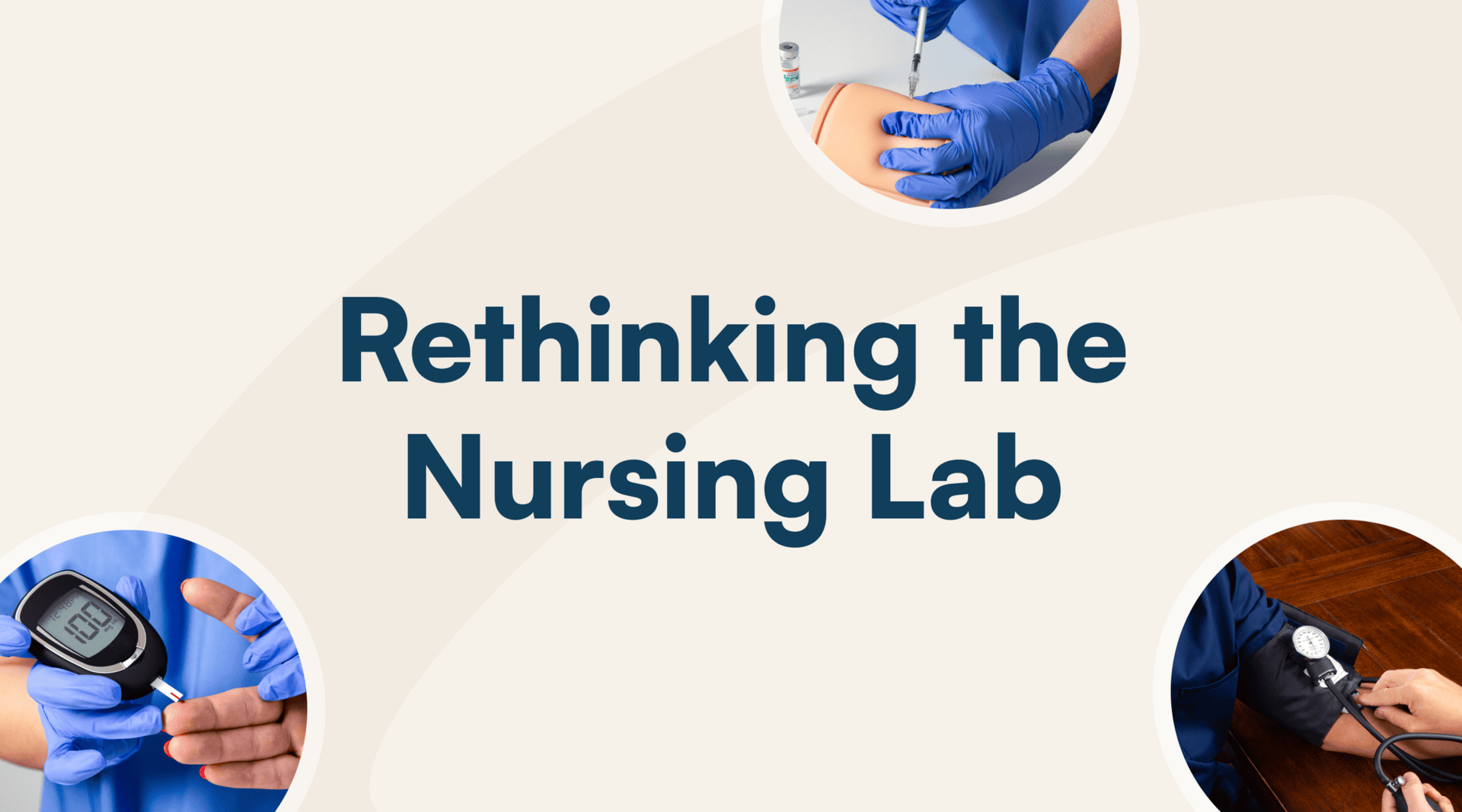The past decade has transformed online learning, with both fully-online and partially-online offerings now listed in many course catalogs across the country. But if you think back to just over a decade ago, more than 75% of college students took all their classes in person, with only 13% taking some online classes. Those numbers flipped dramatically during the COVID-19 pandemic. However, instead of reverting to the pre-pandemic status quo in the last four years, college students are increasingly choosing to take classes online.
In fact, according to new data from CHLOE 9, 60% of chief online learning officers said that online courses fill up first, while 77% said that students using on-campus housing are now asking for online options. Online courses are proving to be a viable source for growing enrollment, specifically with growing interest in online, hybrid and blended lab courses. So we set out to get the inside scoop from deans, department chairs, and instructors teaching these courses.
In our second Annual Lab Report: The State of Online & On-Campus Science Labs, we surveyed 295 educators, and they shared the trends they’re seeing in online and on-campus course and what it’s really like to teach those courses today—discussing the unique challenges they face as well as the strategies they use to successfully deliver effective lab courses online and in person.
Survey Says… Hands-on Learning & Effective Pre-Lab Activities Matter
With enrollment in on-campus courses continuing to decrease, institutions are rethinking the way they deliver courses and have increasingly embraced online learning, alongside hybrid and blended offerings, as a way to boost enrollment.
In light of the growing interest in STEM—just over one-third of students surveyed by Bay View Analytics said they were, or planned to be, majoring in a STEM discipline while the number of STEM jobs is growing twice as fast as non-STEM careers—programs are specifically looking for effective and engaging ways to differentiate and attract students to their science programs while delivering high quality learning experiences, regardless of where students are learning from.
Online Options Can Increase Enrollment
More than half of administrators surveyed indicated enrollment declines in on-campus lab courses since 2021, while nearly three-fourths reported steady growth in online lab courses, much of which can be attributed to dual enrollment and pre-health science students. To respond to increasing student demand, 39% of deans/department chairs are working to increase the number of lab courses offered online, which is paramount if they want to capture a larger pool of students.
Source: The 2024 Annual Lab Report
What Today’s Students Want
Source: 1878 surveyed students from the 2024 Annual Lab Report
88% of students who took an online science course cited it was important to them to take the course online.
32% said they would enroll at another institution and 30% wouldn’t enroll at all if online options weren’t available.
These numbers aren’t surprising, when broader trends are taken into account. In the 2024 Voice of the Online Learner, 77% of surveyed students said they decide on the online modality before any other factor, and 60% would choose programs at a different school if their preferred college/university didn’t offer their courses online.
“There aren’t enough options for chemistry classes for students with full time work schedules.No night classes and no online classes available, and there’s a good chance I’d have to enroll elsewhere to complete the pre-reqs I am looking for.” -Chemistry student
When you create more options for online versions of your face-to-face lab courses, you can cast a wider net. You’ll open yourself to a wider student population, whereas those unable to adapt to the changing needs and preferences of today’s students will risk falling behind and, ultimately, driving those students elsewhere.
Hands-on Labs are Most Effective for Replicating On-Campus Quality
However, offering more online lab courses is easier said than done.
We surveyed nearly 300 educators who have taught online and on-campus, and they told us that anyway you slice it, students are less prepared than ever. In fact, 76% said that students lack pre-requisite knowledge, spend little time preparing outside of class, and aren’t engaging.
The good news is that you can change that with the right approach to delivering online labs.
The vast majority of educators surveyed told us that hands-on labs are essential for creating an engaging lab experience that’s comparable to an on-campus lab.
In fact, all three stakeholders we surveyed—administrators, instructors, and students—agreed that hands-on labs were the most effective when it came to ensuring quality, supporting student success, and re-creating the hands-on aspect of on-campus learning.
- 84% of department chairs/deans rated hands-on labs for online students as the most effective format for students.
- 86% of instructors using hands-on labs were satisfied with this modality.
- 84% of students felt they learned the knowledge and skills they needed in the online course because of hands-on labs.
As one microbiology department chair said, “Using at-home hands-on lab kits are great for online students to learn the same concepts at a microscale.” Echoing those sentiments, one online Anatomy & Physiology instructor pointed out, “Online hands-on labs are rigorous and force students to work for a grade. They have to do the lab and participate to earn points.”
Dr. Effat Zeidan Hatoum, Associate Professor of Science and Mathematics, Biological Sciences at California Baptist University shared, “These hands-on kits have significantly boosted student engagement, allowing students to actively participate in scientific experiments from home, mirroring an in-person lab setting. Family members are engaging in the lab experiments along with the students, which enhances the overall learning experience.”
In addition to being satisfied with their use of hands-on labs, instructors said the most important reason for incorporating this modality was to ensure quality. 75% said that using hands-on labs was comparable to an in-person lab experience, an increase from 63% last year, while 77% said they were easy to incorporate into their courses.
Pairing Virtual Simulations with Hands-on Learning Improves Student Performance
Online or on campus, students want a meaningful and engaging learning experience.
In the Online Learning Consortium’s report, Empowering Change Together, authors cite students’ desire for educators to focus on intentionality when incorporating assignments into their digital, blended, and online courses. Students shared that they are often juggling different classes, work, and other responsibilities—and appreciate when instructors made the connection and purpose between content, activities, and assessments clear.
Incorporating a hands-on element in any lab experience is critical for student learning and deeper understanding of the course content. It’s the key to ensuring the experience is comparable to a face-to-face lab. When you pair virtual simulation with hands-on labs, you’ll be able to further elevate and enrich the learning experience for students, while also better preparing them for hands-on experiments. When these lab modalities are used together, they appeal to a broader set of diverse learning styles and lead to deeper engagement, greater reinforcement, and a more meaningful learning experience.
In fact, when you use virtual simulations to supplement students’ learning, you would be working to address the number one challenge that students and educators, alike, said they contend with both in online and on-campus courses: students’ lack of preparedness and confidence in their abilities.
80% of campus faculty and deans/department chairs felt that student lack of preparedness and pre-requisite knowledge was a challenge.
Students taking on-campus labs said that virtual simulations as a pre-lab activity would help them feel more prepared for an in-person lab. In fact, when we asked students what supplemental resources they needed to feel more prepared and confident in their abilities, an overwhelming majority said virtual simulations of the experiment:
- Virtual simulations / practice labs (86%)
- Asynchronous videos (82%)
- Peer collaboration (55%)
That’s why it’s important to be intentional and leverage an effective mix of virtual simulations and hands-on labs. Not every lesson has to be hands-on so consider slotting in a virtual simulation when:
- You want students to observe the unobservable. Virtual simulations can portray abstract objects, such as light rays, that students cannot see in a physical lab. Climate change and evolution, for example, can be simulated using an online lab but would be difficult to teach physically.
- You want to reinforce and supplement learning and allow for repeatability. Unlike the finite materials of a physical lab, it doesn’t matter, except in time, whether a student runs a digital experiment one time or 20 times to get the desired result. With each simulation, students can manipulate variables, run the experiment, and immediately see the results, especially important for struggling students.
- You want to balance costs in your course and make it more practical. For example, use virtual microscope lessons or simulations to teach the periodic table—a concept that lends itself well to a simulation.
| “I am not of the mind that virtual simulations can fully substitute or replace the in-person lab learning experience. However, I think providing access to videos and simulations can help reinforce the learning of certain concepts and procedures.” -Microbiology department chair “I utilize a virtual simulation to connect theory to application and to reteach the concepts in a totally different manner.” -Microbiology faculty |
Whether your lab is fully online, on campus, blended or hybrid, you have an opportunity to deploy more online learning tools, like virtual simulations, that can work hand-in-hand with hands-on labs to improve student preparedness, confidence, and performance.
The Takeaway: 5 Actions that Support Greater Student Success
Based on the survey responses that informed our 2024 report, we compiled these five actions that are proving to significantly impact the success of your lab courses.
- Delivering a Course Mix that Supports Diverse Student Needs: Reexamine the mix of on-campus, hybrid, and online students and consider course formats that better support student needs. Continue expanding access through online offerings while implementing best practices to maintain quality.
- Using Hands-on for a High Quality, Authentic Lab Experience: Hands-on learning can be done at-home, on-campus, or anywhere else students learn. Be sure to evaluate the course’s learning objectives in order to implement hands-on lab experiences that are tailored to the rigor of the course and provide students with the opportunity to learn the knowledge and skills they need for the course.
- Supplementing Hands-On with Virtual Simulations to Reinforce Learning: Consider an intentional blend of hands-on and virtual simulations in your online course. The right mix will give students an opportunity to practice skills in a low stakes environment, reinforce key concepts, and provide a more effective learning experience.
- Leveraging Pre-labs with Trial Experiments to Improve Student Preparedness: While pre-lab assignments are common, they seem to be missing a critical component that could better prepare students for on-campus labs. In addition to traditional reading and written prep, include mock virtual experiments in your pre-lab activities to optimize in-person lab time and do more to better prepare students before they arrive.
- Providing Student Resources & Support to Ensure Greater Success: Invest time in providing students with additional support and guidance, using in-person or virtual office hours, recorded videos & tutorials, virtual simulations, and the opportunities to collaborate with peers. These tactics can help boost student confidence and better prepare them for labs both online or on-campus.
The Annual Lab Report: State of the Online & On-Campus Lab
In the end, the future of science education looks bright, if your program is willing to adapt. With a fuller picture of how to deliver effective, high-quality lab experiences that better prepare students for hands-on work, programs have an opportunity to differentiate their offerings and attract more students while expanding the reach of their lab offerings.
Offering more lab options online or enriching an in-person lab using new approaches often begins with finding out what works and what doesn’t work for both students and instructors. Data from this survey reveal specific actions you can take to ensure your lab courses support instructors and meet learners’ needs. And the payoff is worth the effort…a quality student learning experience that truly engages students and genuinely gets them excited about science is a win!
With a focus on building experiences comparable to the in-person lab experience, that ensure quality and rigor, balance costs, and provide instructor and student support, institutions have a real opportunity to attract and retain more students while expanding the reach of their STEM offerings. For more, including actionable takeaways to help you address the key challenges of delivering effective lab courses, download a copy of our full Annual Lab Report: State of the Online & On-Campus Science Lab.
Discover more articles

Science Interactive Launches New Nursing Fundamentals

What Clinical-Ready Actually Looks Like (And How to Get There Sooner)


